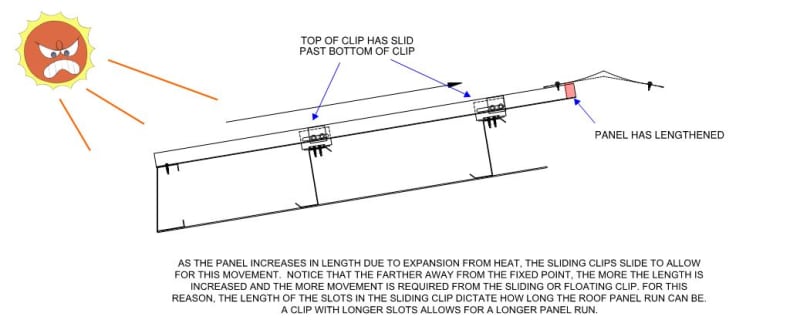Italo01
Structural
- Sep 4, 2021
- 169
Hello, i work for a steel fabricator as designer and we usually use Channel purlins for roof structures, but i am studying the advantages of the continuous z purlin. Currently, my boss has no interest in using the z purlin because of the cost, but if the weight reduction is substantial, he may advance the purchase of a press brake machine that he is planning for some time. I have two questions:
1 - Talking with my former steel structures professor, he said that i should be cautious about thermal expansion/contraction, particularly beacuse of the difference of temperature between the purlin and the roof, which can put the bolts in shear and tear the roof, causing leakings. Is this a valid concern?
I've run some preliminary calcs and don't consider that this will be a problem. Does anyone had problems with this?
Also, i don't see how the z purlin will behave differently from the Channel with regard to this problem.
I think that the continuous z purlin will develop a good level of compression because of temperature increase. Does anyone check for that? Is it a big problem for continuous Z purlins?
2 - I'm studying the influence of the deck(Through fastened) on the bending strength of the purlins. The R factor method described in the AISI specifications does not take the braced length in consideration and this surprised me. If i use bridging, the bending strength, according to the method, does not increase. How can this be explained?
Thanks.
1 - Talking with my former steel structures professor, he said that i should be cautious about thermal expansion/contraction, particularly beacuse of the difference of temperature between the purlin and the roof, which can put the bolts in shear and tear the roof, causing leakings. Is this a valid concern?
I've run some preliminary calcs and don't consider that this will be a problem. Does anyone had problems with this?
Also, i don't see how the z purlin will behave differently from the Channel with regard to this problem.
I think that the continuous z purlin will develop a good level of compression because of temperature increase. Does anyone check for that? Is it a big problem for continuous Z purlins?
2 - I'm studying the influence of the deck(Through fastened) on the bending strength of the purlins. The R factor method described in the AISI specifications does not take the braced length in consideration and this surprised me. If i use bridging, the bending strength, according to the method, does not increase. How can this be explained?
Thanks.

